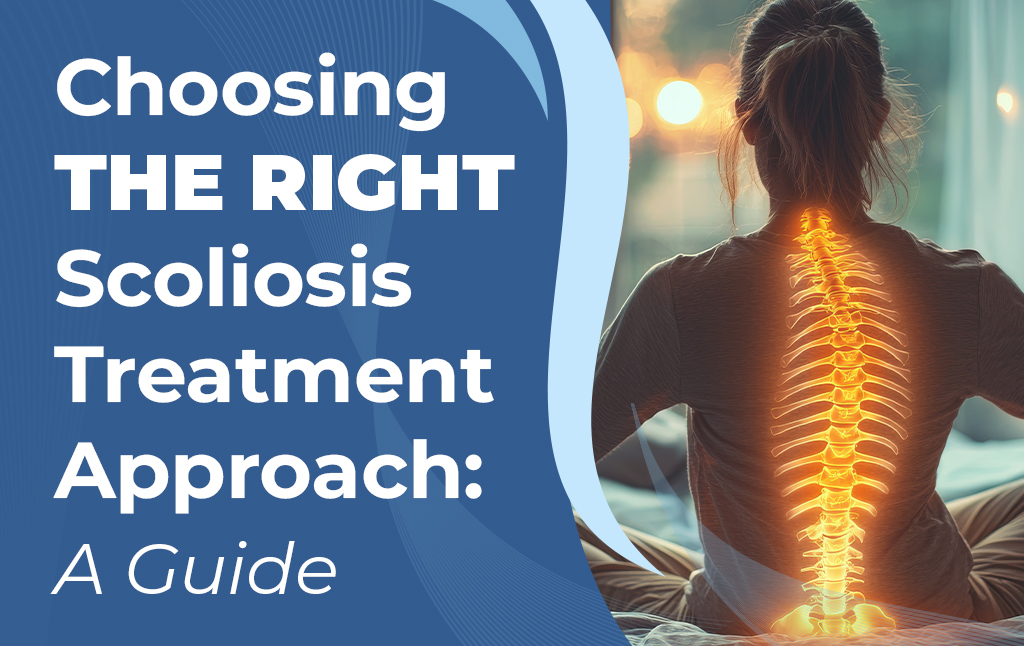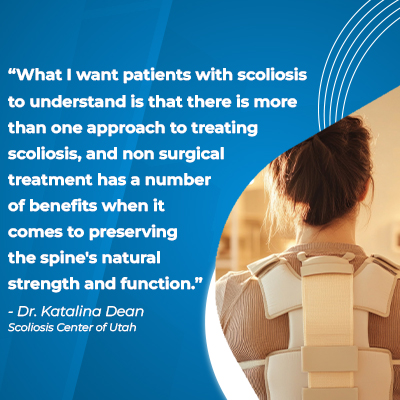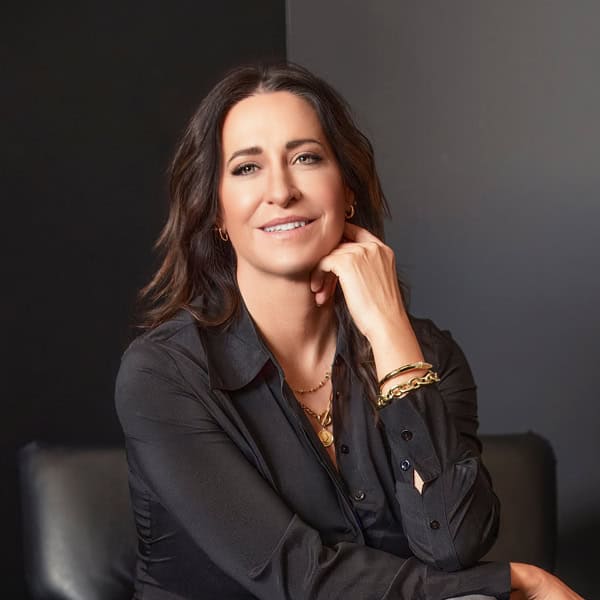Blogs
Choosing the Right Scoliosis Treatment Approach: A Guide

For those recently diagnosed with scoliosis, guidance is needed, and for parents and/or caregivers of a child recently diagnosed, the pressure to make the right treatment choice can be overwhelming. The best way to approach a scoliosis diagnosis and know the right treatment choice to commit to is to be informed.
There are two main ways to respond to a scoliosis diagnosis: with traditional surgical treatment or modern conservative scoliosis treatment. Scoliosis can be highly treatable, but the longer it’s left untreated, the more likely future surgical treatment is, and spinal surgery is always risky.
With progressive scoliosis, when treatment is started is an important factor.
Early Detection and Intervention
Scoliosis is a 3-dimensional spinal condition that causes the spine to bend laterally and twist, and as a progressive condition, the nature of the unhealthy spinal curve is to get larger and more severe over time.
As scoliosis develops and progresses, certain vertebrae are tilting unnaturally, shifting their position so they are no longer aligned with the rest of the spine, and if the spine is misaligned, so is the entire body from the head to the feet.
I can never give treatment guarantees, but the sooner treatment is started, the better, but before treatment can be started, the condition has to be diagnosed, and this isn’t always easy, particularly when it comes to childhood scoliosis.
Scoliosis severity ranges from mild scoliosis to moderate and severe scoliosis, and when mild, condition effects can be subtle and difficult for an average person to notice.
Particularly in children, early detection can be a challenge because the condition isn’t commonly painful, whereas in adult scoliosis, it’s pain that most often leads to a diagnosis and treatment.
Scoliosis Pain
Scoliosis becomes compressive when skeletal maturity is reached and growth is no longer occurring; while growth is occurring, the spine is constantly being lengthened, counteracting the condition’s compressive nature.
Compression is uneven pressure, and it’s the main cause of scoliosis pain that can include muscle pain, back pain, and radiating pain throughout the body due to compressed nerves.
So for children, scoliosis pain doesn’t often lead to a diagnosis.
And particularly in cases of adolescent idiopathic scoliosis that are untreated during adolescence and continue to progress into adulthood, when conditions become more noticeable, largely because of pain, this highlights the importance of early detection.
 The longer scoliosis is left untreated, the more overt its effects can become, the harder it is to address, and the less effective non surgical treatment becomes.
The longer scoliosis is left untreated, the more overt its effects can become, the harder it is to address, and the less effective non surgical treatment becomes.
You might still be unclear about the benefits of early detection…why not just go straight for surgical treatment?
Understanding Spinal Health and Spinal Fusion Surgery
A healthy spine will be strong, stable, balanced, and have its healthy curves and neutral alignment in place, and when it comes to scoliosis treatment, the type of treatment applied can have lifelong consequences.
As an ongoing condition, treating scoliosis is an ongoing process, and what’s important to understand is that the risks of surgical treatment can be unnecessary if proactive treatment is applied early on.
Spinal fusion surgery fuses the unnatural spinal curve’s most-tilted vertebrae together into a solid bone, and this commonly involves cutting through muscle to access the spine, removing intervertebral discs that sit between adjacent vertebral bodies, and attaching metal rods to the spine to maintain its position and alignment.
Quality of Life
Scoliosis surgery comes with some serious potential risks and side effects, so even though orthopaedic surgeons have their patients’ best interests at heart, curve correction worked towards through surgical treatment can negatively affect the spine’s long-term health.
One of the most common complaints of patients who have undergone spinal fusion is that they have a reduced range of motion as their spines are more rigid, particularly around the fusion site, and while some patients can maintain enough flexibility above and below the fused portion, others can experience a noticeable loss that can involve activity restrictions.
For young athletes and people who value taking part in certain sports and activities, experiencing a reduced range of motion in the spine can impact overall quality of life.
Patients also need to understand that a fused spine is not as strong so is more vulnerable to injury.
While some patients are happy with the results of surgical treatment, some regret not taking the potential risks seriously and trying a less-invasive treatment option first; in many cases, patients on the path of traditional treatment are only presented with a surgical recommendation, so are unaware they are being funneled in that direction, and that there is indeed an effective surgical alternative.
 What I want patients with scoliosis to understand is that there is more than one approach to treating scoliosis, and non surgical treatment has a number of benefits when it comes to preserving the spine’s natural strength and function.
What I want patients with scoliosis to understand is that there is more than one approach to treating scoliosis, and non surgical treatment has a number of benefits when it comes to preserving the spine’s natural strength and function.
Spinal Health and Conservative Scoliosis Treatment
Here at the Scoliosis Center of Utah, patients who qualify for care can benefit from an innovative and integrative non surgical approach to treating scoliosis.
The goal is to diagnose conditions early so treatment can be started early, and this means when conditions are going to be at their mildest and most responsive.
The progression of scoliosis makes the spine increasingly rigid, making it less responsive to treatment and more complex to treat.
The longer scoliosis is left untreated, or not treated proactively, the less effective non surgical treatment options become, but when a diagnosis is met with a proactive evidence-based individualized conservative treatment plan, scoliosis can be highly responsive and treatable.
In cases that are particularly severe and/or atypical, such as neuromuscular scoliosis, surgical treatment can be recommended from the time of diagnosis, but for typical cases of idiopathic scoliosis, and/or when diagnosed early, conservative treatment can be highly effective at reducing curve size and restoring the spine’s balance, stability, and alignment.
The ScoliBrace® Solution
The ScoliBrace® can offer impressive 3-dimensional correction by pushing the spine into a straighter alignment, and as the brace is 100-percent customizable, patients benefit from this specialized approach to bracing.
Patients are scanned using digital motion X-ray and 3-dimensional scanning software so the brace can be customized to address the specifics of each patient’s condition and body type, making braces more effective and comfortable to wear.
As the main challenge of scoliosis bracing is compliance, a brace that’s more customized and comfortable is one that’s more likely to be worn precisely as prescribed.
As scoliosis progression is triggered by growth, childhood scoliosis treatment focuses on the best way to halt curve progression, and this is through combining corrective bracing with other facets of corrective scoliosis treatment.
The SCOLI BALANCE Solution
ScoliBalance ® is an exercise program that can help patients hold corrective results achieved through bracing, just as bracing can help hold results achieved through scoliosis-specific exercise.
ScolBalance® therapy can help in a number of ways:
- Slowing/stopping curve progression
- Reducing flexible curves on a structural level
- Improving the spine’s balance and stability
- Complementing results achieved through the ScoliBrace®
- Improving core/back muscle balance and strength
- Improving spinal flexibility
- Postural correction
- Pain management
- Reducing the risk of injury through falls in older patients
Patients of the Center are comprehensively assessed so a customized exercise program can be designed that addresses the specific characteristics of their posture, curvature type, size, and location.
Mirror-image exercises are a focus as they teach postural awareness and correction by holding the spine in as aligned a position as possible: counteracting the uneven forces of scoliosis.
A home exercise program is key for further rehabilitating the spine to sustain corrective results achieved through scoliosis-specific exercises and brace treatment.
Patients of the Center also benefit from accessing a level of chiropractic care that only 1 percent of the world’s chiropractors are certified in and can offer.
Chiropractic BioPhysics®
The structural nature of scoliosis means the condition involves an abnormality within the spine itself, so needs to be addressed on a structural level.
Chiropractic BioPhysics (CBP) is at the apex of chiropractic care and involves the integration of biology, anatomy, physiology, geometry, and chiropractic to diagnose and treat issues related to misalignment of the body and its parts, particularly the spine.
As it’s based on proven scientific principles and proven chiropractic techniques, through CBP, scoliosis can be impacted on a structural level by improving the spine’s alignment, stability, and balance.
The goal of CBP is to identify the root cause of pain, discomfort, and mobility issues, and to address it with proactive and customized treatment plans.
Conclusion
When it comes to deciding on the type of scoliosis treatment to commit to, being informed is important because different types of treatment, and the timing of when treatment is started, can shape the spine’s current and future health.
There are no treatment guarantees, but with progressive conditions like scoliosis, when treatment is started can be an important factor.
The sooner treatment is started, the better; as a condition that gets more complex to treat the more it progresses and the longer it’s left untreated, the best way to keep mild scoliosis mild and prevent curve progression into the moderate and severe classification is to apply powerful conservative treatment disciplines early on.
Starting conservative treatment early is also the best way to prevent the need for invasive future surgical treatment; there are fewer limits to what conservative non surgical treatment can achieve with early intervention.
Scoliosis patients who are informed can choose the treatment approach that’s most likely to offer the type of results they’re looking for.
Cosmetic reasons are a primary motivation behind patients committing to spinal fusion surgery, but the reality is that spinal fusion focuses solely on the spine and not the condition’s effects, which includes postural changes.
Scoliosis surgery can successfully straighten the spine and hold its position, but those hoping it will restore their pre-scoliosis bodies and posture are often disappointed; true postural correction and a treatment approach that impacts not just the spine, but also the spine’s surroundings and the entire body, is what conservative treatment has to offer.

Dr. Katalina Dean
Dr. Katalina Dean is the founder and clinical director of Scoliosis Center of Utah, in Midvale, UT. Her team specializes in posture correction, spinal rehabilitation, and non-invasive scoliosis care and bracing.
Call Today
Do You Qualify for Care?
Schedule an Appointment Below
